by Grupo de Informacion en Reproduccion Elegida (GIRE) and G-Spot, by Colmena Consultants
The Safe Abortion Observatory in Mexico, developed by Colmena Consultoras, is a publicly accessible digital platform that aims to contribute, through evidence-based and substantiated political advocacy, to access to abortion as a public health issue.
In 2020, the Ministry of Health’s now-named National Center for Gender Equity, Sexual and Reproductive Health included the free provision of abortion services in the public sector in its action program. These differentiated services are based on quality standards and the best available technologies, resulting in the establishment of the first national network of Safe Abortion Services (SAS) in Mexico.
In 2021, the Technical Guidelines for Safe Abortion Care in Mexico were published by the same organization, with the aim of establishing quality criteria for care. In 2022, it was updated and signed by the Mexican Social Security Institute (IMSS), the Institute of Services and Social Security for State Workers (ISSSTE), and the Pan American Health Organization (PAHO). It is still in force, as it is aligned with the latest guidelines issued by the World Health Organization.
In this context, the Safe Abortion Observatory in Mexico (ObservAS) initiative, developed by Colmena Consultoras, features a publicly accessible digital platform that combines information and data monitoring tools, indicators, inputs, and services, aimed at both users and a specialized audience. Its objective is to contribute, through evidence-based and substantiated political advocacy, to access to abortion as a public health issue.
Service map: a particularly useful tool for female users
Throughout the country, public services must provide safe abortions with quality and compassion. This means that the clinical management of spontaneous or induced abortions must be carried out using the technologies recommended for the weeks of gestation, such as medication and manual vacuum aspiration, and that uterine curettage must be used only under certain specific conditions.
Additionally, quality criteria include evidence-based counseling, free from bias or coercion; adequate pain management; the availability of post-abortion contraception; and comprehensive care for violence, when applicable. Services should therefore be an affirming experience for women, ensuring their autonomy and the ability to make decisions about their health, their bodies, and their life plans.
Upon visiting the observas.mx website, a map appears showing the safe abortion services offered by the Ministry of Health, IMSS-Bienestar, ISSSTE, and the Legal Termination of Pregnancy Program (ILE) in Mexico City. Those interested in locating a service can browse directly on the map or use the search filters by state, city, or institution.
Each health unit’s information sheet contains relevant information such as service hours and a link to directions. Providing location information helps increase demand for a service whose availability is not yet widely known among the population.
At the end of the form, there is a section that allows people to share their experience regarding the care they received. Questions are answered on a five-star scale, with one representing the lowest level of satisfaction. The response takes about three minutes and does not request any personal or identifying information, making it anonymous and confidential.
User satisfaction is the primary goal of implementing quality policies and services that are accessible and acceptable to the population. In this sense, understanding user perspectives helps expedite the identification of access barriers and areas for improvement. ObservAS seeks to trigger research, communication, social advocacy, and dialogue with relevant authorities.
Monitoring elements for advocacy on safe abortion
The digital platform integrates other monitoring tools that allow for triangulating different data sources and indicators for a more in-depth analysis of progress, facilitators, and barriers to access to safe abortion in Mexico. For example, the information compiled to date shows that in addition to the 268 health units classified as SAS in the Ministry of Health’s directory, there are approximately 460 units that provide abortions. However, in both cases, the gap in the implementation of quality standards is evident, as curettage persists in 47% of first-trimester care, and only 4.8% report the use of medications. In contrast, the services of the Mexico City ILE Program provided 78% of care with medication in 2024.
Analyzing the type of public health institution operating the services reveals the political will with which some entities have adopted public policy, with the ISSSTE standing out with 132 services included in the official directory. In contrast, the ordinary IMSS, despite having signed the technical guideline, does not have any SAS.
Faced with global and regional threats of setbacks in the guarantee of sexual and reproductive rights, budget cuts, and shifting priorities in political, economic, and health agendas, intersectoral participation and coordination between monitoring and accountability are essential for civil society and governments to develop strategies to ensure the progressiveness of national public policies.
* Colmena Consultoras (IG @colmena_consultorias) is a team of experts in public health, gender, and sexual and reproductive rights. They develop research initiatives and advocacy projects in public policy and legislation.
SOURCE: Animal Politico, by Colmena Consultants, 25 August 2025. Translated from Spanish by the website.



